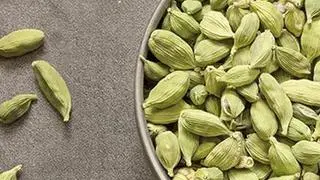Rabi acreages so far still traillast year's levels, even though the pace of planting has been progressing steadily, reducing the gap, as witnessed early this month. According to the Agriculture Ministry, the total acreages, so far, stood at 476.12 lakh hectares, down 5.2 per cent from last year. In the first week of December, the gap in acreages stood at over eight per cent.
The acreages under key winter crops, such as wheat and rapeseed-mustard, are marginally higher than the corresponding last year's levels, while sowing of gram, a key pulses crop for the season has been lower by around 13 per cent. Poor soil moisture levels, due to below normal south west monsoon and lower water levels in key reservoirs, are seen having an impact on the progress of rabi crop sowing. On Thursday, the Central Water Commission said the water level in 91 key reservoirs across the country stood at 92.387 billion cubic metres, about 57 per cent of the storage capacity at full reservoir levels.

Mixed reports so far
Wheat has been planted in more than two thirds of the normal area, with major producing states such as Uttar Pradesh, Punjab and Madhya Pradesh reporting an increase in acreages over corresponding last year. UP has seen an increase of four lakh ha, standing at 76.70 lakh ha over last year, while in MP the acreages are up by eight lakh ha to 44.57 lakh ha. However, states such as Bihar, Gujarat and Maharashtra, which are facing water stress, have reported a decline in wheat acreages.
Total area under rapeseed-mustard has registered an increase of around four per cent mainly on account of increase in sowing in the key producing states of Rajasthan, Madhya Pradesh, Uttar Pradesh and West Bengal. In Haryana, the mustard acreages have witnessed a marginal decline over last year's levels.
The acreages under gram has been lower than last year's levels in the major producing States of Madhya Pradesh, Maharashtra, Rajasthan and Karnataka. However, in Uttar Pradesh and Chhattisgarh, the gram acreages have registered a marginal increase.
A major decline in planting of jowar in Maharashtra on account of the prevailing drought has pulled down the total acreage by 27 per cent. In Maharasthra, jowar has been planted in about 9.1 lakh ha, as against corresponding last year’s 16.03 lakh ha. Jowar acreage has also decline in Karnataka, but has seen an increase in Tamil Nadu.







Comments
Comments have to be in English, and in full sentences. They cannot be abusive or personal. Please abide by our community guidelines for posting your comments.
We have migrated to a new commenting platform. If you are already a registered user of TheHindu Businessline and logged in, you may continue to engage with our articles. If you do not have an account please register and login to post comments. Users can access their older comments by logging into their accounts on Vuukle.